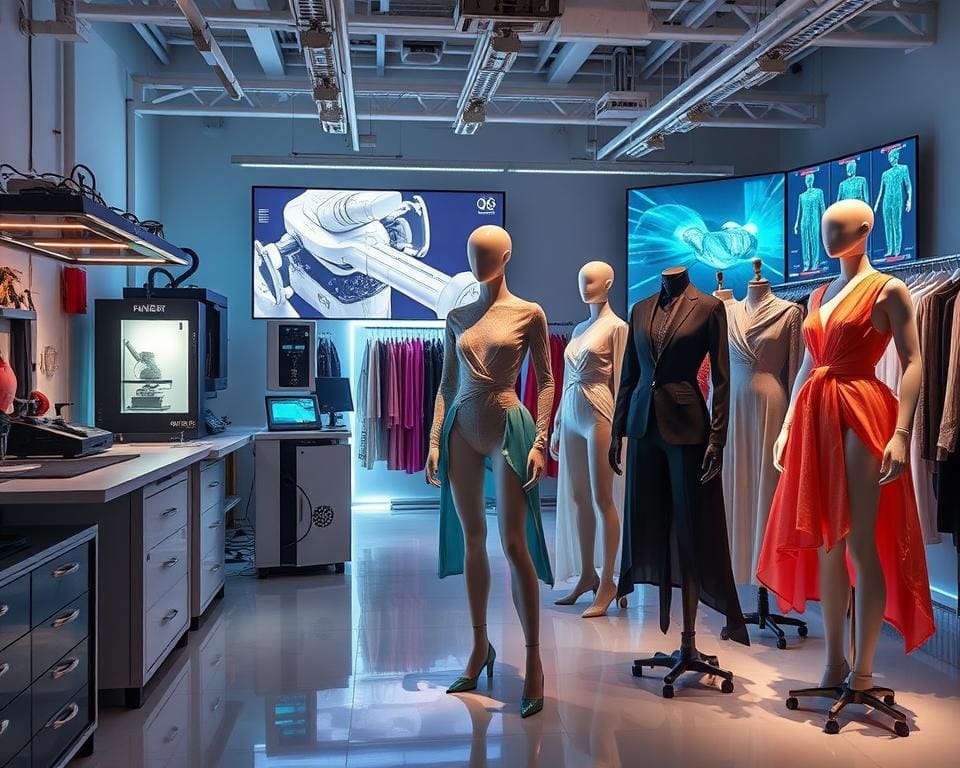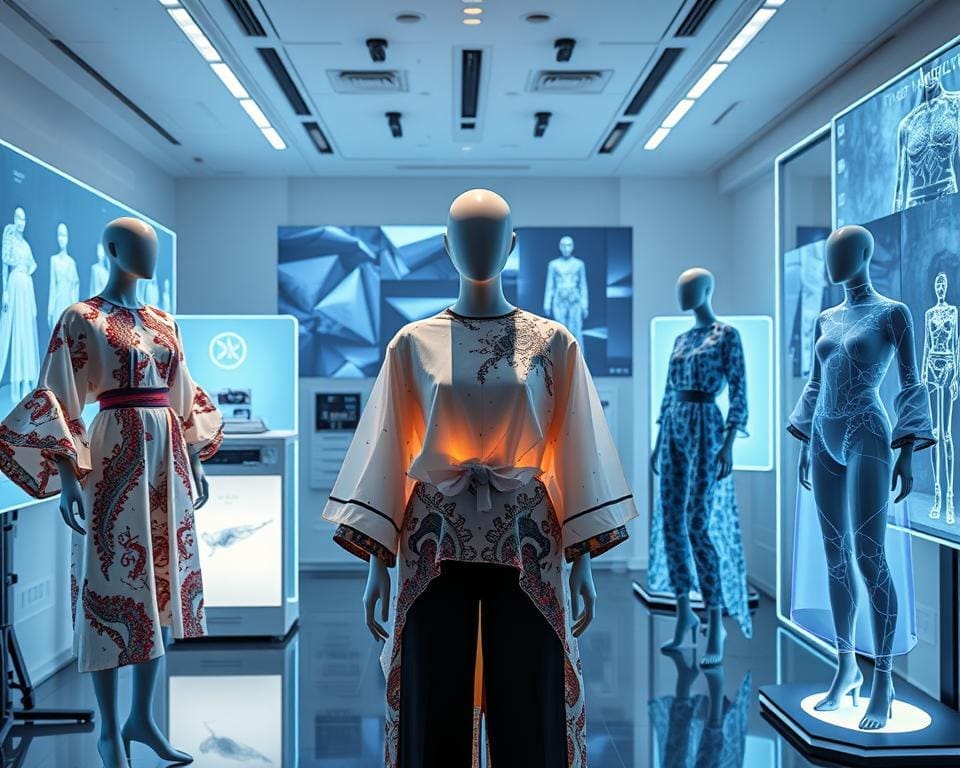The fashion industry is experiencing a profound transformation driven by the impact of technology on fashion design. This shift reflects a seamless integration of fashion technology, enhancing creativity, efficiency, and sustainability amongst designers. Technological advancements in fashion, such as artificial intelligence, 3D printing, and virtual reality, are fundamentally reshaping how garments are conceptualised and created. Renowned brands exemplifying this evolution, like Balenciaga and Adidas, are pioneering the integration of these innovations, which not only fosters creativity but also promotes more environmentally sustainable practices.
As we delve into the tech influence on fashion design, it’s clear that the future of fashion is being redefined. The implications of these advancements resonate deeply within various aspects of the industry, from production methods to consumer engagement. Such changes point towards an exciting horizon for both designers and consumers alike.
Understanding Fashion Technology and Its Role in Design
Fashion technology plays a crucial role in transforming the design landscape of the fashion industry. This evolution has ushered in a new era, significantly enhancing the creative process and production capabilities of designers. Through technological advancements in fashion, industry professionals are now able to push the boundaries of creativity and functionality.
The Evolution of Fashion Technology
The journey of fashion technology began with the introduction of computers, enabling designers to create intricate and detailed designs. Over the years, the influence of technology on fashion design has expanded considerably. Significant milestones include the development of CAD (Computer-Aided Design) systems, which allow designers to construct precise digital mock-ups. This leap forward not only speeds up the design process but also fosters greater innovation in fabric and garment creation.
Key Technologies Shaping the Fashion Industry
Several key technologies are transforming the fashion industry today. These include:
- 3D Printing: Offers a unique method for producing custom designs that cater to individual preferences.
- Wearable Technology: Integrates electronics into garments, providing both functionality and style.
- Sustainable Materials: Advances in fabric technology focus on eco-friendly options, reducing the environmental impact of fashion.
Brands like Nike and Under Armour exemplify the effective use of these fashion technology developments, shaping consumer demands and setting new standards in the market.

The Impact of Technology on Fashion Design
In recent years, technology has emerged as a pivotal force in reshaping the landscape of fashion design. From streamlining processes to fostering creativity, digital innovations in fashion pave the way for a more efficient and sustainable future. By integrating cutting-edge tools, designers can enhance their workflows and collaboration, ultimately leading to remarkable outcomes.
Digital Innovations Transforming Design Processes
Digital innovations in fashion are vastly transforming traditional design processes. Tools such as Clo3D and TUKAcad allow designers to craft and simulate their creations in a virtual setting. These advancements reduce the time and materials typically wasted during prototyping, enabling fashion tech trends to gain traction. Designers benefit from faster iterations, thereby fostering creativity while minimising environmental impact.
On-Demand Manufacturing and Personalisation
The rise of on-demand manufacturing marks a significant turn towards personalisation in fashion design. Brands like Zazzle and Printful have harnessed this innovative model, allowing customers to customise their preferred designs. This not only caters to individual tastes but also diminishes overproduction, a challenge that the industry must address. Through technology integration in fashion, businesses can respond to consumer demands while supporting environmentally conscious practices.
Future Trends in Fashion Industry Technology
As we look to the future, the intersection of fashion and technology promises to unveil remarkable advancements that will redefine the industry. One of the most significant future trends in fashion industry technology is the implementation of augmented reality (AR). This technology is set to transform the shopping experience, allowing customers to virtually try on garments, thus bridging the gap between physical and digital retail. Such fashion technology developments will not only enhance consumer engagement but also empower them to make more informed purchasing decisions.
Moreover, the integration of blockchain technology stands to revolutionise supply chain dynamics, fostering enhanced transparency and accountability. In an era increasingly defined by ethical consumerism, this technological advancement will encourage sustainable sourcing practices and strengthen brand integrity. As the tech influence on fashion design expands, designers will be able to tell richer stories about their products, creating deeper connections with their audiences.
Additionally, innovations in AI-driven analytics are anticipated to reshape inventory management and trend forecasting. By analysing vast amounts of data, fashion brands can respond more swiftly to changing consumer preferences, making the industry more agile. These technological advancements in fashion will not only streamline operations but also drive creativity, enabling designers to push boundaries and bring their vision to life with unprecedented precision. As we embrace these emerging trends, the fusion of fashion and technology will undoubtedly lead to a future filled with boundless possibilities.









